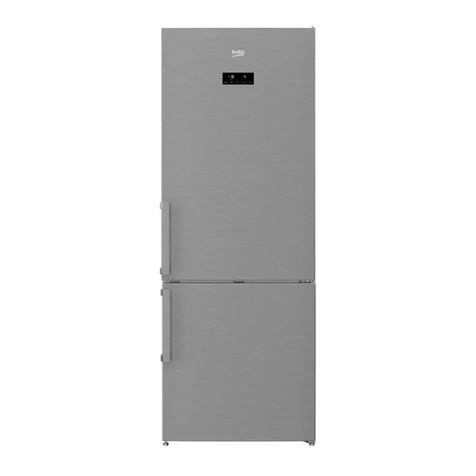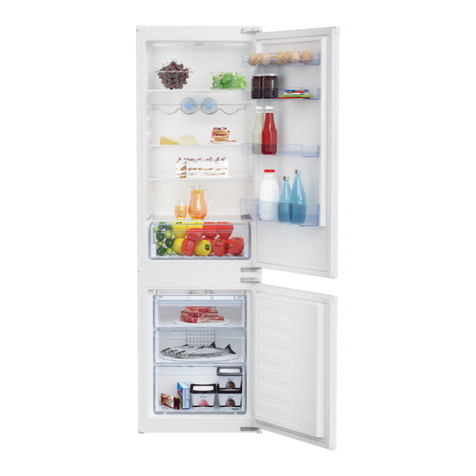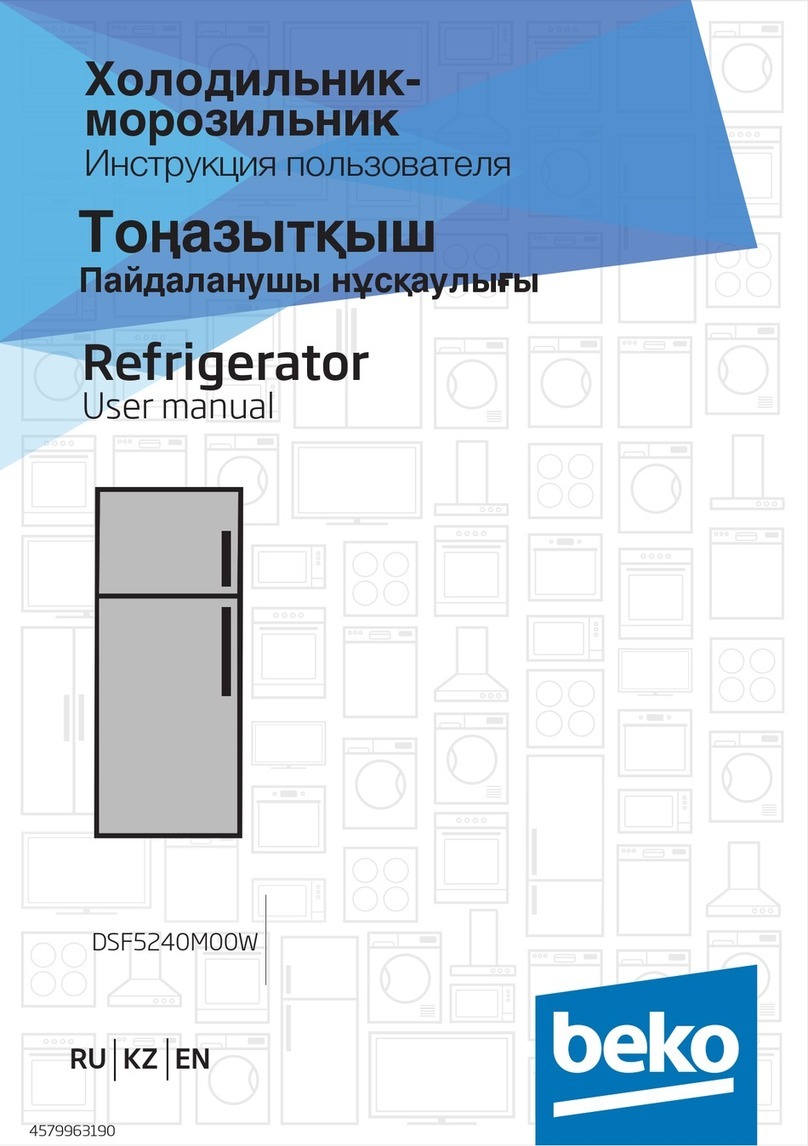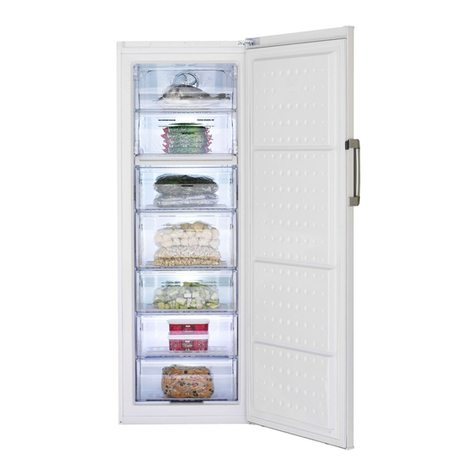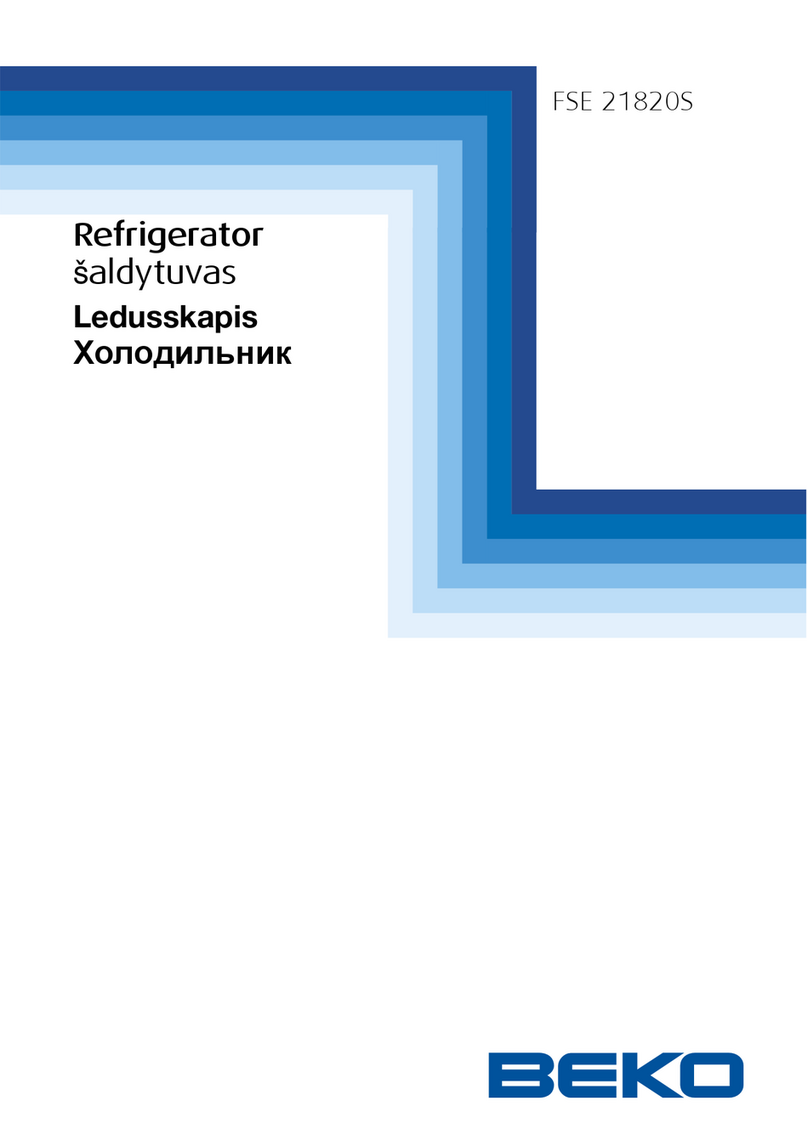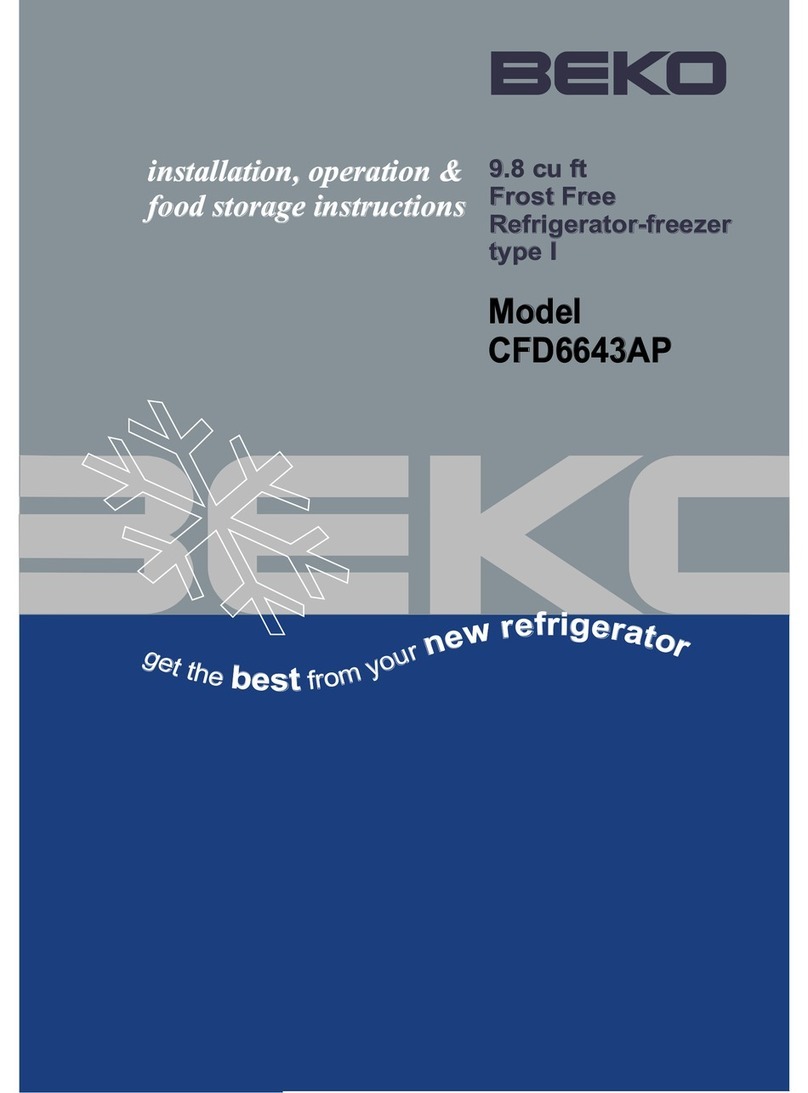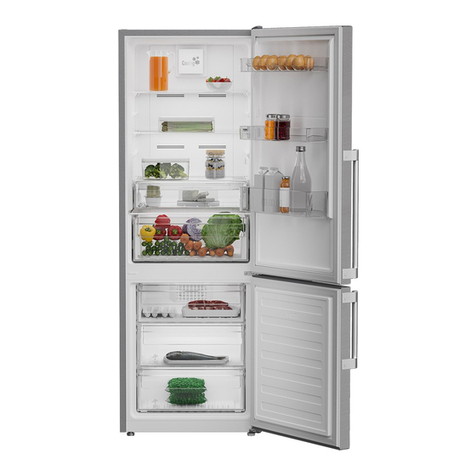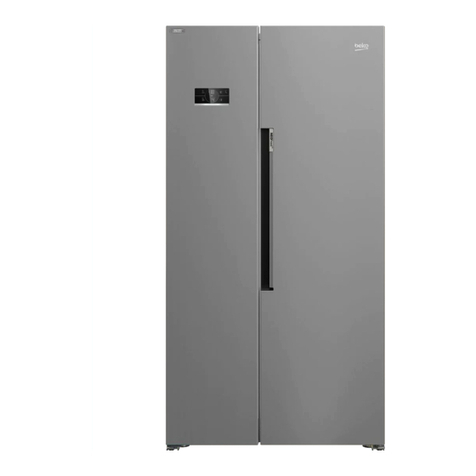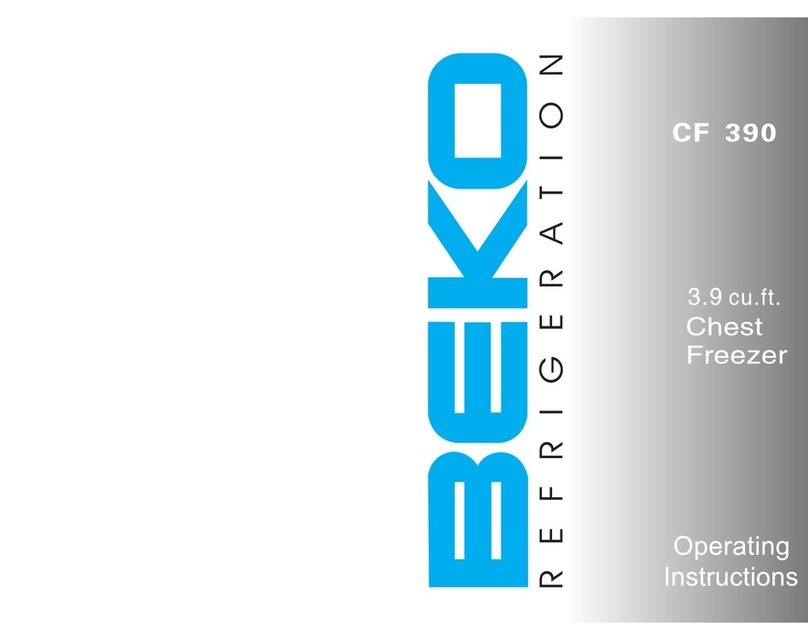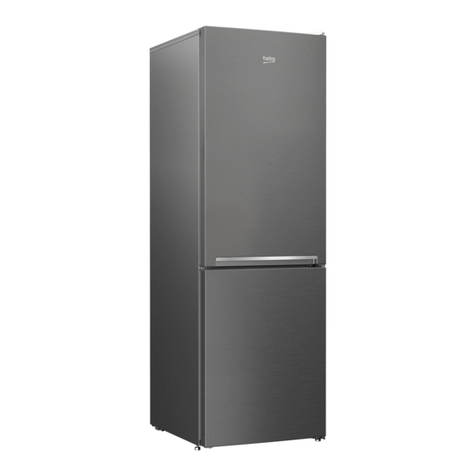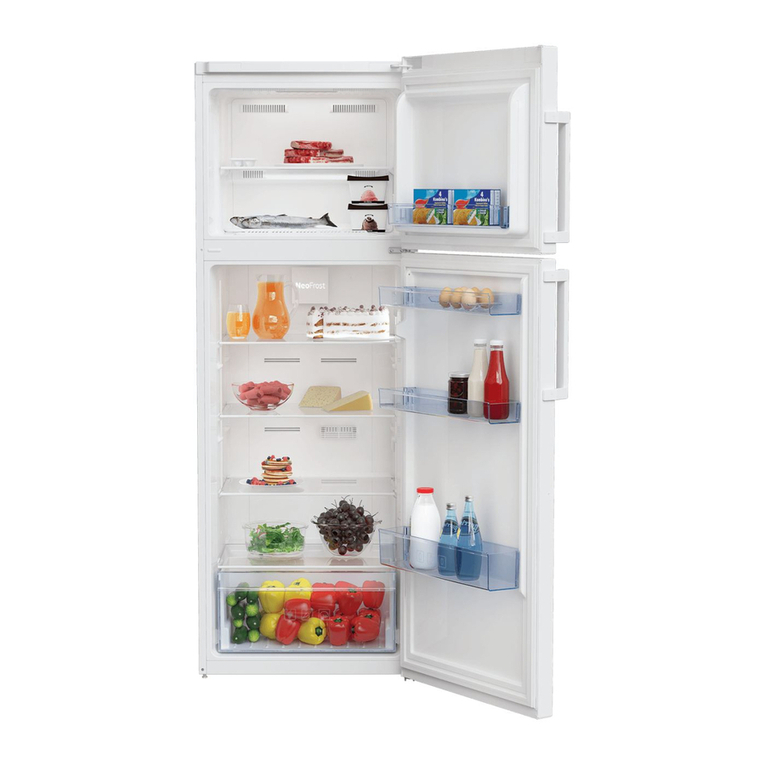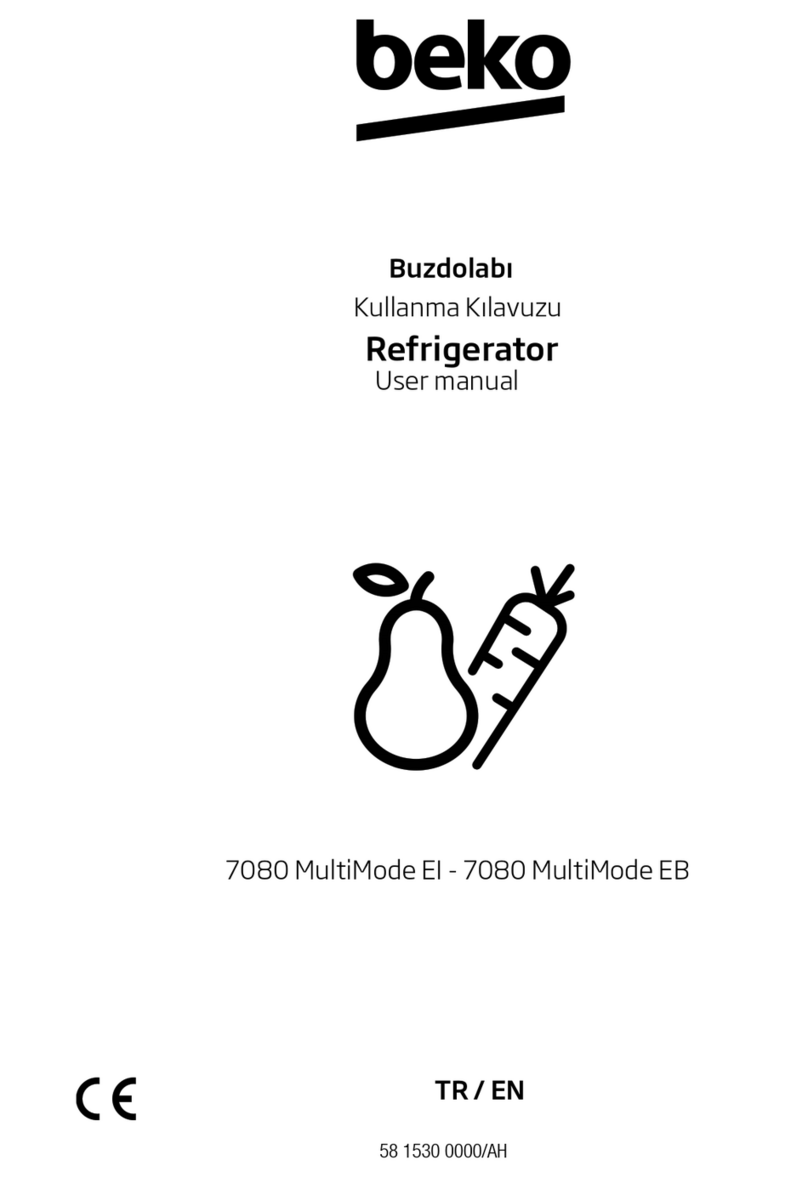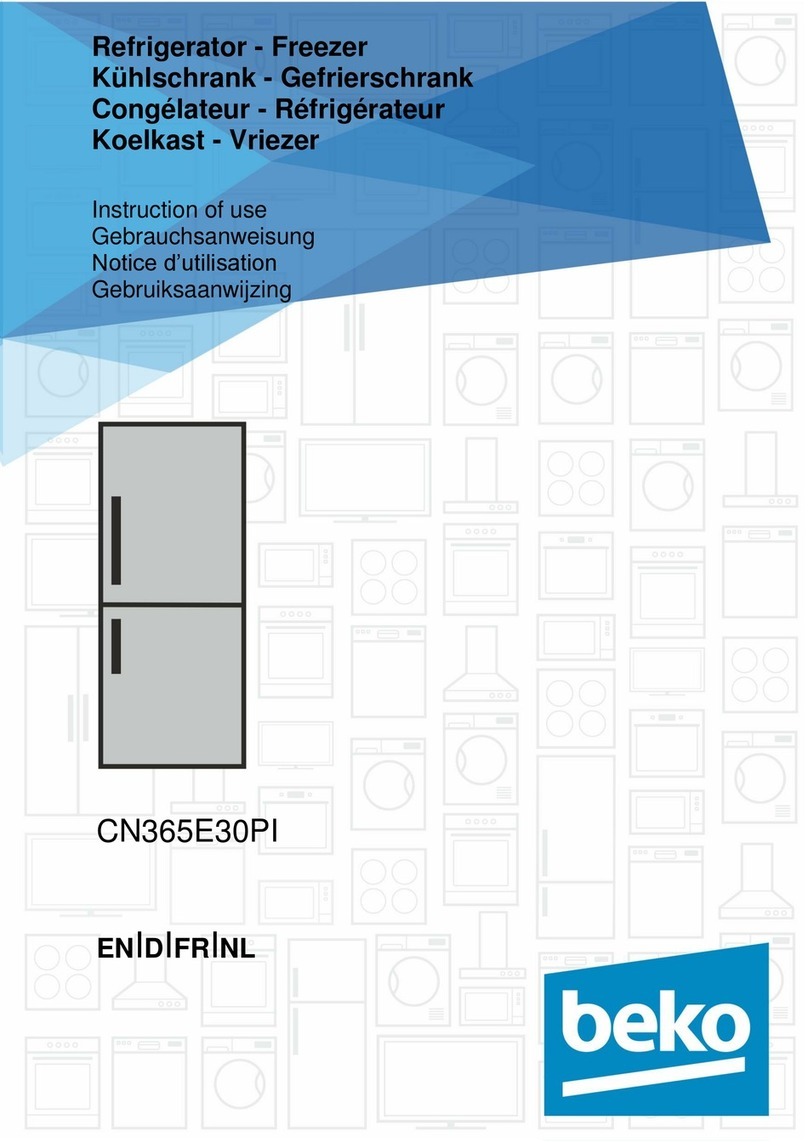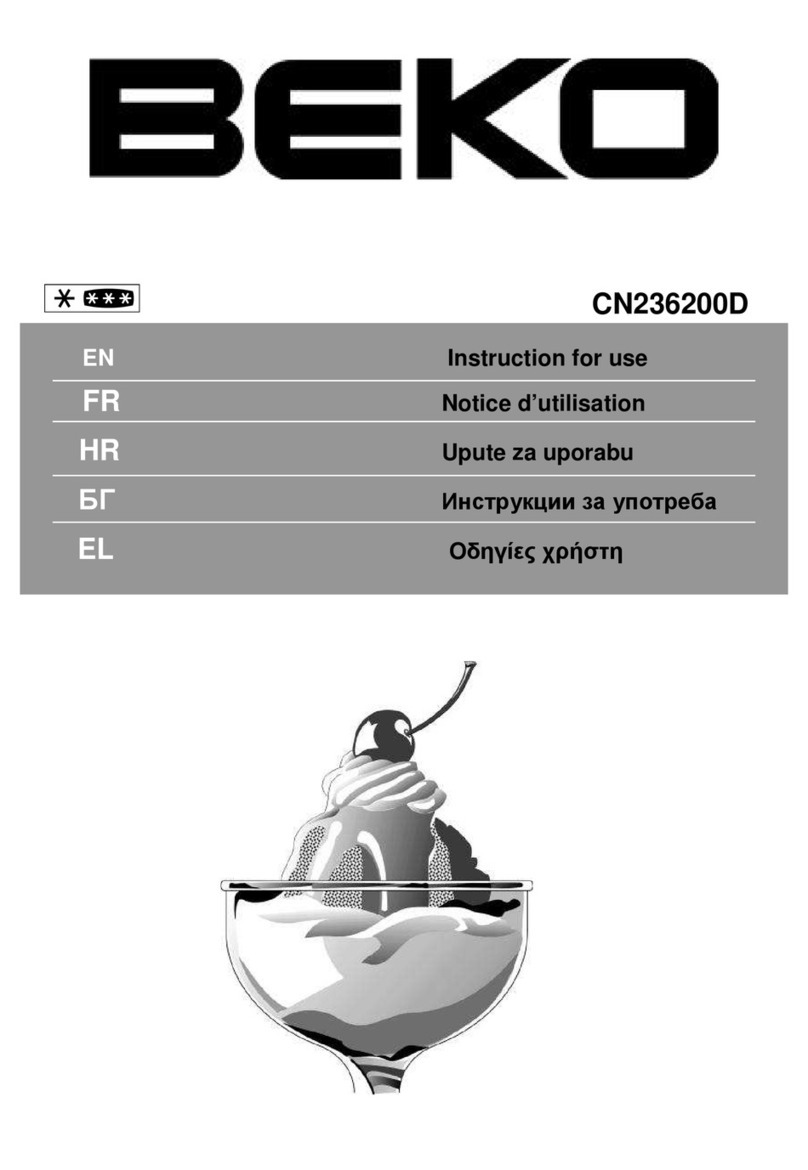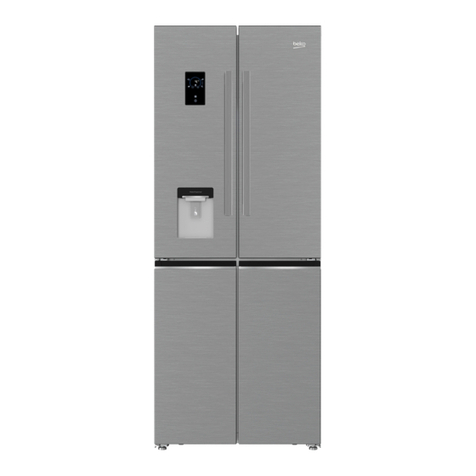Electrical requirements
Before inserting the plug into the wall socket
make sure that the voltage and the frequency
shown in the rating plate inside the appliance
corresponds to your electricity supply.
We recommend that this appliance is
connected to the mains supply via a suitably
switched and fused socket in a readily
accessible position.
Warning! This appliance must be earthed.
Repairs to electrical equipment should only be
performed by a qualified technician. Incorrect
repairs carried out by an unqualified person
are carry risks that may have critical
consequences for the user of the appliance.
ATTENTION!
This appliance operates with R600a which is
an environmental friendly but flammable gas.
During the transportation and fixing of the
product, care must be taken not to damage
the cooling system. If the cooling system is
damaged and there is a gas leakage from the
system, keep the product away from open
flame sources and ventilate the room for a
while.
WARNING - Do not use mechanical devices
or other means to accelerate the defrosting
process, others than those recommended by
the manufacturer.
WARNING - Do not damage the refrigerant
circuit.
WARNING - Do not use electrical appliances
inside the food storage compartments of the
appliance, unless they are of the type
recommended by the manufacturer.
WARNING - If the supply cord is damaged, it
must be replaced by the manufacturer, its
service agent or similarly qualified persons in
order to avoid a hazard.
Transportation instructions
1. The appliance should be transported only in
an upright position. The packing as supplied
must be intact during transportation.
2. If during the transport the appliance, has
been positioned horizontally, it must not be
operated for at least 4 hours, to allow the
system to settle.
3. Failure to comply with the above
instructions could result in damage to the
appliance, for which the manufacturer will not
be held liable.
4. The appliance must be protected against
rain, moisture and other atmospheric
influences.
Important!
• Care must be taken while cleaning/carrying
the appliance not to touch the bottom of the
condenser metal wires at the back of the
appliance, as this could cause injury to fingers
and hands.
• Do not attempt to sit or stand on top of your
appliance as it is not designed for such use.
You could injure yourself or damage the
appliance.
• Make sure that the mains cable is not caught
under the appliance during and after moving,
as this could damage the cable.
• Do not allow children to play with the
appliance or tamper with the controls.
Installation instructions
1. Do not keep your appliance in a room
where the temperature is likely to fall below 10
degrees C (50 degrees F) at night and/or
especially in winter, as it is designed to
operate in ambient temperatures between +10
and +38 degrees C (50 and 100 degrees F).
At lower temperatures the appliance may not
operate, resulting in a reduction in the storage
life of the food.
2. Do not place the appliance near cookers or
radiators or in direct sunlight, as this will
cause extra strain on the appliance's
functions. If installed next to a source of heat
or freezer, maintain the following minimum
side clearances:
From Cookers 30 mm
From Radiators 300 mm
From Freezers 25 mm
3. Make sure that sufficient room is provided
around the appliance to ensure free air
circulation (Item 2).
• Put the back airing lid to the back of your
refrigerator to set the distance between the
refrigerator and the wall (Item 3).



